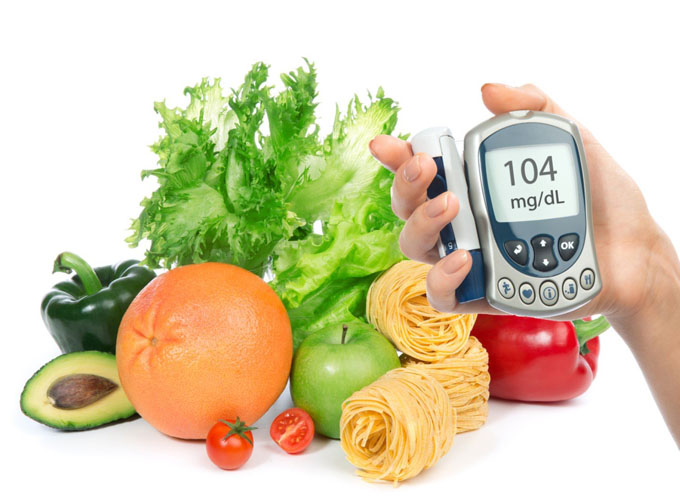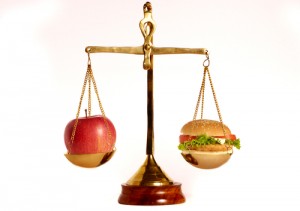Food and Blood Sugar
Diet is vital for smooth body functioning irrespective of you are diagnosed with any disease or not. But the diet you consume becomes a critical element if you have Blood Sugar. A person with high or low Blood sugar simply means their body is unable to produce enough insulin or it is not using the insulin correctly, which in turn leads to glucose accumulation in the body.
High inclusions of blood glucose in the body not only causes exhaustion and tiredness in the short term but also heart diseases in the long term. Hence, patient with diabetes is recommended to eat foods that do not cause spikes and dips in blood sugar level and gets absorbed in the body slowly.
Glycemic index is one of the essential factors to be considered while choosing the food you consume because whatever you eat has a direct impact on your blood sugar levels. The Glycemic index measures the effect of the specific food we eat on our blood sugar.so it is important to keep checking the glycemic scores of the food you consume.
Along with GI, a strict check should be kept on carbohydrates because the wrong type of carbs can also be responsible for high blood sugar spikes. A balanced diet aims to keep weight on track, improve cholesterol, control blood sugar, and blood pressure. As the increase in anyone can cause heart disease, kidney problems, vision loss, etc.

Foods that can help lower and control blood sugar
Lowering Blood sugar level means just to maintain it and not let it increase the specific level. Once you have blood sugar, it’s almost next to impossible to get rid of it by thinking of lowering it. To keep it low is the only way to maintain it and for that, a good meal plan is required.
Here is the list of foods that can help maintain blood sugar and how:
1) Green leafy vegetables: Leafy Vegetables are high in potassium, nutrition, minerals, Vitamin C and are low in calories and digestible carb. Increases Vitamin C intake has shown reduced inflammation in the body. Leafy is also a good source of antioxidants which protect eyes from various problems like cataract, vision loss, etc. Potassium helps the body to get rid of sodium through the kidney faster. All the contents present in Leafy helps to lower the blood sugar and protect diabetes complications like heart or eye diseases.
2) Berries: Berries are one of the nutritious fruit you can eat if you have diabetes. They consist of a natural compound called Flavonoids. They are also high in fiber and are antioxidants in nature. Additionally, it also has anti-inflammatory benefits for heart health and reduces heart disease risk. Flavonoids help to prevent hypertension and lower blood pressure.
3) Fatty Fish: Fish are high in lean proteins and omega 3 Fatty acids. Its anti-inflammatory properties improve arteries function after eating. Consumption of fish regularly reduces the risk of heart disease. The proteins help you feel satiate and increases metabolic rate too. Overall, these properties can help in lowering blood pressure.
4) Nuts: Nuts are rich in dietary fiber and are low in digestible carbs. All types of nuts are high in plant proteins, unsaturated fatty acids, and other nutrients. They consist of antioxidant vitamins, flavonoids, and minerals like magnesium, potassium. The only caution while choosing nuts for consumption should be that they are whole and unprocessed. Regular intake of nuts helps body composition and a significant reduction in insulin levels, beneficial for a person with diabetes as high level of insulin can cause other diseases like Alzheimer’s, cancer, etc
5) Olive Oil: Olive oil is an example of healthy fat and extremely beneficial for heart health. It contains antioxidants called polyphenols. The anti-inflammatory property present in it protects the Cholesterol levels from damaging by oxidation and decreased blood pressure.
Studies have also shown that olive oil is the only healthy fat that can reduce heart disease risk.
6) Garlic: Garlic helps to increase the amount of nitric oxide in the body, which in turn can help reduce hypertension. Nitric oxide promotes the widening of arteries to reduce blood pressure. It also reduces inflammation and cholesterol in a diabetic person’s body.
7) Yoghurt: Yoghurt is very well known for weight loss because of low fats present in it. The amount of sugar added to yoghurt should always be checked before consumption to be benefited by its properties. More servings of yoghurt have shown a reduced risk of developing high blood pressure and heart diseases. Greek yoghurt is also very beneficial. Even more, preferred over healthy yoghurt as it has high calcium and protein that promotes weight loss by reducing calorie intake and appetite.
8) Whole Grains: Rich in fibre, broken down very slowly by the body, which in turn slows down the glucose absorption. Fibres also help insulin sensitivity. These factors ensure the blood sugar levels are maintained and reduce the risk of diabetes.
9) Fruits: Fruits have their sugar, and it is a great source to maintain fructose in the body. But in case of a diabetic person, this much sugar is harmful. That’s why a person with diabetes should choose fruits with a low GI score or contains a high level of water and fibre to balance out this naturally occurring sugar. Fruits are a great alternative to any other sweeteners on the table, and you can easily alternate it with fruits with low GI scores.
10) Chia seeds: Chia seeds are incredibly high in fibre and low in digestible carbs. They are also rich in healthy fats, vitamins, fibre, and antioxidants. Studies have shown that Chia is excellent at improving blood sugar levels and reduces chances of heart disease.
11) Eggs: Eggs are food that can make you feel satiated for hours. Regular consumption of eggs can reduce various heart risks. Due to eggs inflammatory property, it decreases inflammation, improves insulin sensitivity. As eggs are high in protein, it promotes proper cholesterol levels and modifies the shape of your harmful cholesterol levels. But while consumption eggs should be eaten whole as nutrients are found in yolk rather than the white.
Additional Strategies
Even though eating a healthful, well balanced good meal is a key, diet alone can’t help to maintain blood sugar levels. Studies have shown that diabetic patients who keep a regular check on their blood sugar levels and performs all the activities that are required to maintain a balanced sugar level are likely to have a much lower likelihood of developing diabetic complications.
Below are additional strategies necessary to be adopted with a balanced diet:
a) Exercise
- b) Staying hydrated
- c) Medications and treatments
- d) Sound sleep and stress management
- e) Weight management
- f) Sticking around a routine
Along with following different ways to lower diabetes and a strict check over diet a diabetic patient can adopt blood sugar formula as a supplement that helps to optimize glucose levels that stabilizes sugar and insulin level
Conclusion
The most crucial factor of the sugar formation in the body of a diabetic patient is what he/she eats. Eating healthy is a central part of managing sugar levels. The type of foods consumed decides the blood sugar level rise or falls. For instance, starchy or sugary foods increase blood sugar levels rapidly. Whereas proteins or fat cause a more moderate increase. Similarly, its recommended to reduce carbs intake and increase fibre intake in the meal. Low levels of sugary diet help to reduce blood sugar levels and block blood sugar spikes, whereas fibre helps carb digestion and sugar absorption.
To maintain a healthy diet routine, it is recommended that a diabetic patient should design a meal plan with the right balance of proportional amounts of proteins, fat, carbs, foods that include magnesium, chromium, etc. and along keeping a check to avoid foods that do not increase glycemia. The above mentioned 11 foods are just a combination of various vitamins, minerals etc. that can help to control or lower blood Sugar. Further, every food’s GI score should be checked before eating. Along with it, the serving size and portion control also need to be followed. It is not necessary that you not eat your favourite food at all.
But there should be a thick line followed between routine diet and occasional cheat days. Its always recommended following the combination of a balanced and good meal along with other necessary activities required in the prevention of blood sugar spikes.
 Staying full is as simple as eating foods with a high protein, fiber, and water content.
Staying full is as simple as eating foods with a high protein, fiber, and water content.